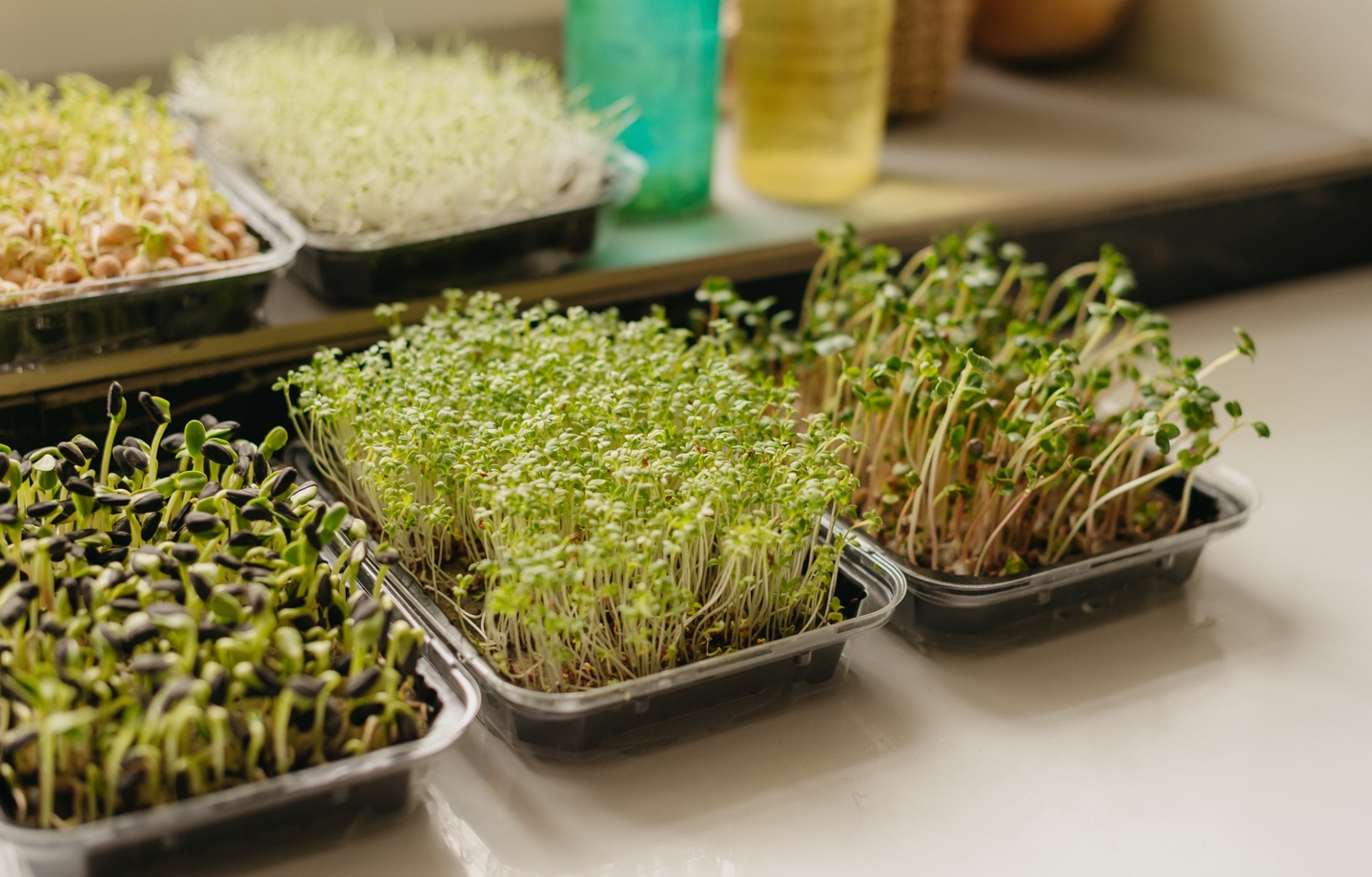Garden all year long with a DIY hydroponic garden, a method for growing herbs, vegetables, and fruits in a soil-less, nutrient-rich environment right at home.
Yes — you can grow fruits and vegetables all year long. Hydroponics is a method of growing herbs, vegetables, and fruits in a soil-less, nutrient-rich environment. And whether you’re a proud plant parent, can’t keep one alive to save your life (maybe you even rock one of these totes), or are simply interested in getting into gardening, a hydroponic setup is an easy solution to year-round plant care. That’s not the only benefit, though.
Read more: How to Propagate Your Plants
Because hydroponic systems don’t need soil, you won’t have to deal with weeds, you’ll use less fertilizer and water than traditional gardening techniques, you don’t need much space to store your system, and, during the warmer months, you can move it outside. You can also expect your plants to grow 30 to 50 percent faster than when they are in soil. They will yield more produce as well.
But, here’s the thing. Ready-to-build kits large enough to grow more than a few herbs can be pricey. Here are a few simple ways you can make your own hydroponic garden at home.
Read more: How to Grow Your Own Mushrooms

This is the most straightforward hydroponic system — it doesn’t require any pumps or electricity. It’s best for growing herbs and lettuce.
What you’ll need:
2 liter soda bottle- Cotton rope
- Coco Coir growing medium
- Perlite
- Plant food
- Ruler
Instructions:
- Cut the soda bottle eight inches from the bottom and fill it with about four cups of water. (You will be flipping the top over to hold your growing medium and seeds.)
- Put a hole in the soda bottle cap.
- Thread the rope through the hole — leave half of it in the top of the soda bottle and let the other half sit in the water reservoir.
- Place the top of the soda bottle on the bottom half, fill with the growing medium (3:1 ratio of Coco Coir and Perlite)
and plant seeds in the growing medium. - Mix nutrient solution and you’re done!

Another basic and inexpensive hydroponic system is the deep water culture setup. However, this one does require an electric pump.
What you’ll need:
5 gallon container3 inch net pot3 inch hole saw drill bit- Master Blend fertilizer
- pH testing kit
- Aquarium air pump
- Air tubing
- Rockwool
- Hydroponic clay pebbles
Instructions:
- 2-3 weeks prior to creating your hydroponic system, place your seedlings in the
rockwool . Once they have roots, you’re ready to make your DIY setup. - Drill two holes on either side of the
5 gallon container lid and place a net pot in each one. - Drill a small hole in the side of the container for the air tubing.
- Fill the container with water, add the Master Blend fertilizer and test the pH level (it should be in the 5.7 to 6.3 range).
- Thread the air tubing through the hole on the side of the container, attach the pump, turn it on, and place the lid on the container.
- Place the seedlings in the
rockwool in the net pots, fill with the clay pebbles, and place in a well-lit area or near a grow lamp.

This type of system is a bit more involved and you’ll need more materials, but the extra work is worth it. Ebb and flow floods your plants with nutrients then drains the area to allow for growth.
What you’ll need:
18 gallon tote- Clear
13 quart flat tote - Marker
- Mechanical garden timer
- Aquarium air pump
- 6 feet of air tubing
- “T” connector
Air stone - Four plastic flower pots
- Perlite
18 inch black irrigation tubing- Small submersible pond pump
- Fill and drain fitting set with one extension
- Coco Coir
- Hydroponic clay pebbles
- pH testing kit
- Drill
Instructions:
- Cut two 1 ¼ inch holes in the center of the clear tote.
- Place the clear tote on the black tote’s lid and, using the marker, trace the holes from the clear tote onto the black tote’s lid. Cut out the holes in the black lid.
- Cut two more 1 ¼ inch holes on either side of the black lid — these are for the pump plug and bubbler tubing.
- Attach the two drain fittings to the center holes in the clear tote with the rubber gasket situated underneath the tote. Place one extension on the larger ¾ inch overflow tube.
- Place irrigation tubing over the water pump outlet fitting.
- Put the clear tote on the black lid and match up the holes.
- Ensure the pump is able to sit on the bottom of the black tote and trim irrigation tubing accordingly. Push the tubing over the port of the smaller drain tube from underneath the black lid.
- Place the bubbler stone in the black tote and run the tubing and pump plug through the holes in the lid. Put the lid on the tote.
- Fill the black tote with 10 gallons of water and plant nutrients, then test the pH level, and plug in the pump.
- Drill ¼ inch holes around the bottom of the pots, fill with a 50/50 mix of Coco Coir and Perlite, plus an inch the clay pebbles. Place seedlings in the pots — like with the Deep Water Culture method, you’ll need to start your seeds before adding them to the system — and fill in with remaining mix.
- Plug the water pump into the timer and fill three times a day for 15 minutes each cycle — keep the bubbler and air stone on to oxygenate the water.
There you have it — three tried-and-tested ways to create your own hydroponic system. Here are a few more tips to help you along the way: use filtered water, store in an area that is 65 to 75 degrees, and be sure you are using food safe containers (plastic bins that are number two or five are best). Happy gardening!
Did you give our DIY guide a try? Share your results with us on Instagram @avocadomattress or on Facebook.

Shop Pillows
The Essential Organic Pillow Collection
Gentle, breathable, non-toxic support.





